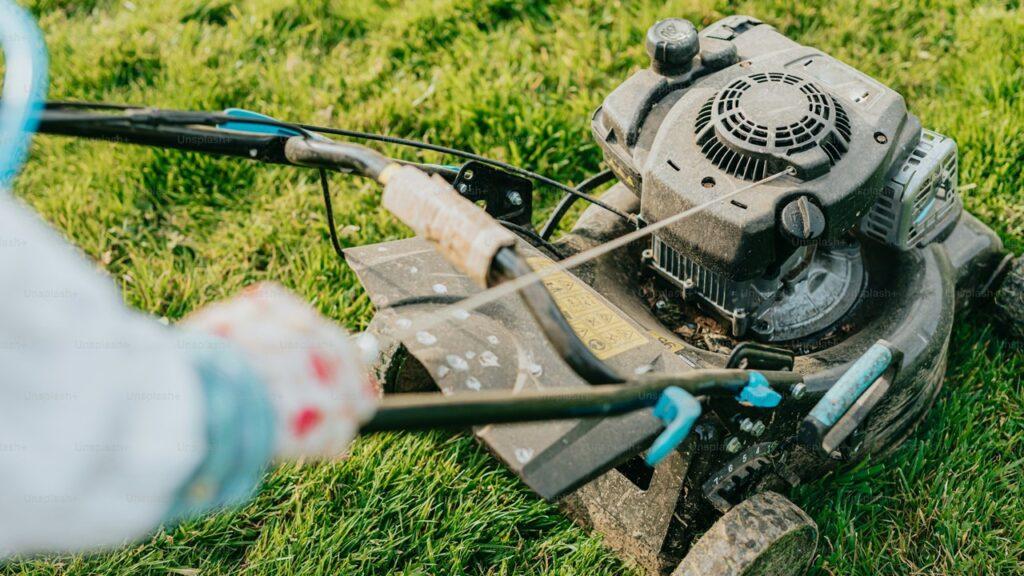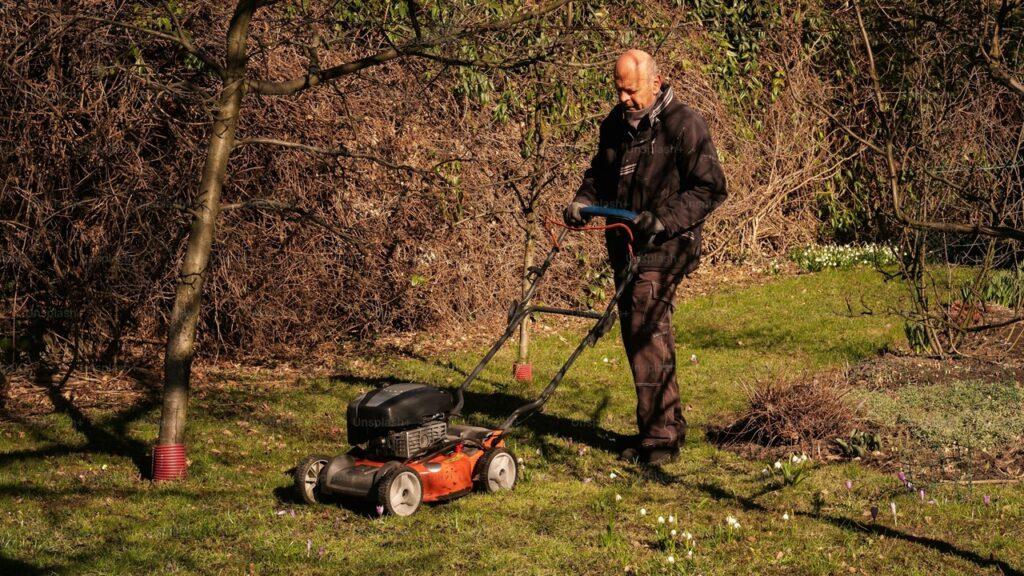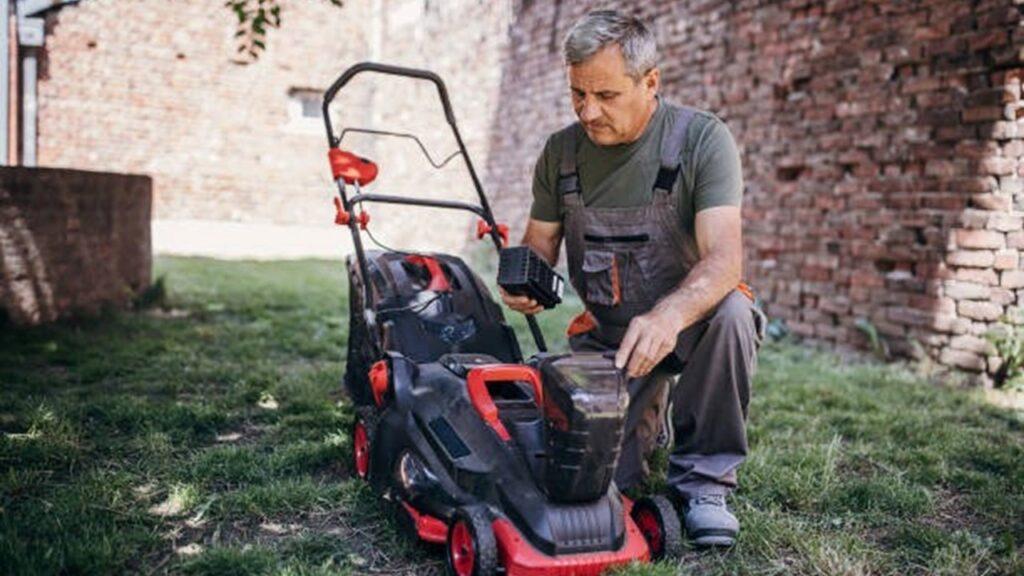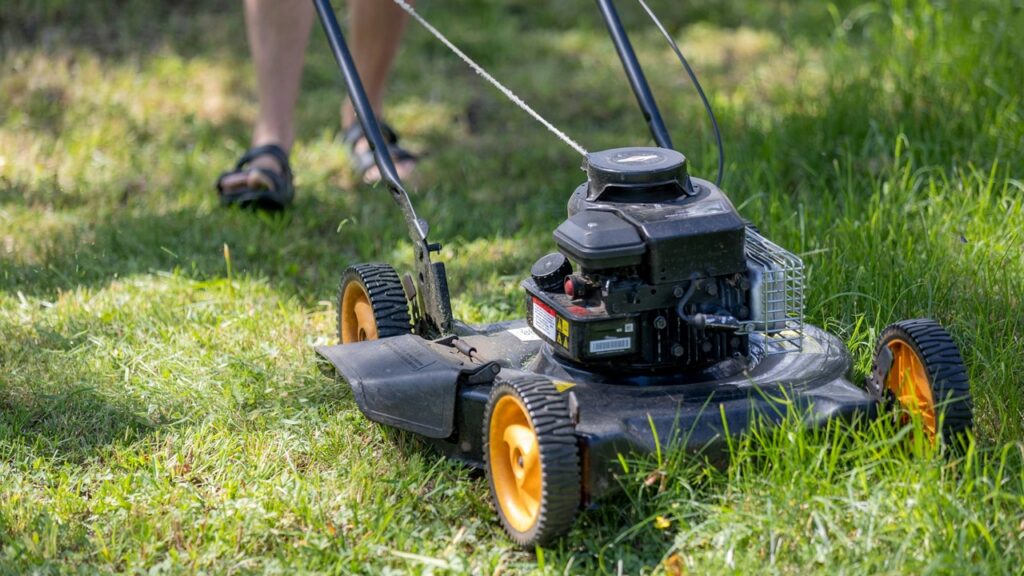
Keeping up with lawn mower maintenance doesn’t have to be complicated. A few simple steps can help your mower last longer, cut cleaner, and save you from bigger repair bills down the road.
In this article, we’ll walk you through 11 easy lawn mower maintenance tips that anyone can do at home, even if you’ve never changed oil in your life.
1. Drain or Stabilize Old Fuel
Fuel left in the tank for more than a few weeks can go stale. This gunky fuel can clog up your carburetor and make your mower tough to start, especially after winter.
To avoid that:
- Add a fuel stabilizer if you’re not using your mower for over 30 days.
- Or drain the fuel tank completely before storage.
- Always follow your mower’s manual for exact steps.
It’s a small task that can save you a costly carburetor cleaning later.
2. Change the Oil Regularly
Just like a car, your lawn mower engine runs better and lasts longer with clean oil. Dirty oil makes the engine work harder and wear out faster.
Here’s what to do:
- Run the engine for a minute to warm it up.
- Turn off the mower and drain the old oil into a container.
- Refill with fresh oil, check your manual for the right type and amount.
- Use the dipstick to double-check the oil level.
Too much oil can be just as bad as too little, so be precise.
3. Clean the Undercarriage After Mowing
Every time you mow, grass clippings and dirt get packed under the mower deck. Over time, that leads to rust, uneven cuts, and more engine strain.
Quick tips:
- After mowing, disconnect the spark plug and tilt the mower safely.
- Scrape off grass buildup with a plastic scraper or brush.
- Rinse gently with water, but dry it off afterward to prevent rust.
- A light coat of silicone spray can help keep grass from sticking next time.
It takes just a few minutes but makes a big difference.
4. Sharpen the Mower Blades
Dull blades don’t cut, they rip. That’s why your lawn might look ragged or discolored after mowing.
You’ll know it’s time to sharpen if:
- Grass tips look torn or frayed
- Mower leaves clumps behind
- Engine seems to work harder
You can sharpen blades yourself with a file or grinder, or drop them off at a local shop. Aim to sharpen them at least a couple of times per season. Always remove the spark plug before handling blades for safety.
5. Clean or Replace the Air Filter
Engines need clean air to run properly. A clogged air filter restricts airflow, making your mower sluggish and inefficient.
Here’s how to handle it:
- Check the air filter every few weeks.
- Foam filters can usually be cleaned with mild soap and water.
- Paper filters are disposable; just replace them when dirty.
- Never soak a paper filter in water or oil.
A clean filter helps your engine breathe better, especially during dusty summer mowing sessions.
6. Replace the Spark Plug
If your mower is hard to start or runs unevenly, a worn-out spark plug could be the reason. It’s a small part but plays a big role in igniting the fuel-air mix in the engine.
- Replace the spark plug once a year or after every 100 hours of use.
- Always disconnect the old plug before doing any repairs underneath the mower.
- Make sure the new plug is the correct type for your mower model.
Spark plugs are cheap, and swapping one out takes just a couple of minutes. It’s an easy fix that can save you a lot of frustration.
7. Check Tire Pressure
This one often gets overlooked, but uneven tire pressure can lead to uneven mowing. It also affects how smoothly your mower handles.
- Low tire pressure = bumpy ride and uneven cut
- Overinflated tires = poor traction
Use a basic tire gauge to check the pressure every few weeks during the mowing season. Inflate them according to your mower’s manual. It’s a quick check that can improve how your lawn looks after a fresh mow.
8. Inspect and Replace Worn Belts
If your mower is making strange noises or isn’t cutting as well as it used to, worn-out belts might be to blame. Belts connect the engine to the blades and help drive power through the machine.
Look out for:
- Cracks or fraying on the belt
- A slipping blade or loss of power
- A squealing sound while mowing
Most mower manuals show how to check and replace belts. If the belts look old or worn, it’s best to swap them out before they snap.
9. Test All Safety Features
Before each mowing season, and every few weeks after, it’s smart to make sure your safety features still work properly. These include blade stops, handle controls, and shut-off switches.
Here’s a quick test:
- Start the mower and engage the blade or drive system.
- Release the handle and make sure everything stops quickly.
- Check that all levers and controls move smoothly.
If something feels loose or doesn’t respond right, don’t ignore it. Mower safety features exist for a reason, and a quick fix now could prevent a serious injury later.
10. Maintain the Battery (If Applicable)
If you have a riding mower or a battery-powered mower, you’ll want to keep that battery in good shape. A dead or weak battery can leave you stranded halfway through your lawn.
- Keep the battery charged regularly, even in the off-season.
- Store in a cool, dry place when not in use.
- Clean the battery terminals if they get dirty or corroded.
- Replace the battery if it’s more than a few years old or no longer holding charge well.
Batteries are pricey, so a little care can help yours last longer.
11. Store Your Mower the Right Way
Proper off-season storage can prevent most of the problems on this list. Don’t just park your mower and forget it until spring.
Before storing for winter:
- Drain or stabilize the fuel
- Remove the battery (if you have one)
- Clean the deck and undercarriage
- Store it in a dry, sheltered area
If possible, cover your mower with a breathable cover to keep out dust and moisture. When spring comes around, you’ll have a mower that’s ready to roll, not one that needs a dozen fixes.
Conclusion
Taking care of your lawn mower doesn’t need to be a big chore. Most of the maintenance tasks are quick, affordable, and easy to do with just a few basic tools.
From changing the oil and sharpening the blades to cleaning the air filter and checking tire pressure, these small steps can make a big difference.
By following these 11 simple tips, you’ll keep your mower in good shape, avoid frustrating breakdowns, and get a better-looking lawn with every cut. A little upkeep now can save you a lot of time and money later.
FAQs
How often should I service my lawn mower?
At the very least, give your mower a full check-up once a year, ideally before the mowing season starts. During the season, keep up with basics like cleaning the deck, checking the oil, and inspecting the blades every few uses.
What’s the best oil for my mower?
That depends on your mower. Most walk-behind mowers use SAE 30 or 10W-30 motor oil, but it’s always best to check your owner’s manual. Using the right oil helps the engine run smoother and last longer.
Is it okay to hose off my mower?
Yes, but carefully. You can rinse off the deck and exterior, but don’t spray water directly into the engine or electrical parts. Always dry the mower after washing to prevent rust.
How do I know if my blades are dull?
If your grass looks torn or has ragged brown edges after mowing, your blades probably need sharpening. You may also notice that the mower seems to be working harder or leaving uneven patches.
Can I use car oil in my mower?
In some cases, yes, but only if it matches the oil grade recommended in your mower’s manual; don’t just grab any motor oil off the shelf. Using the wrong type can harm the engine over time.

At our core, we’re a group of passionate yard, garden and mown enthusiasts. We dive deep into the world of backyard of your home. We try to provide as much value to the readers with our information and how to blog articles as possible along with proper information-based reviews as well.




